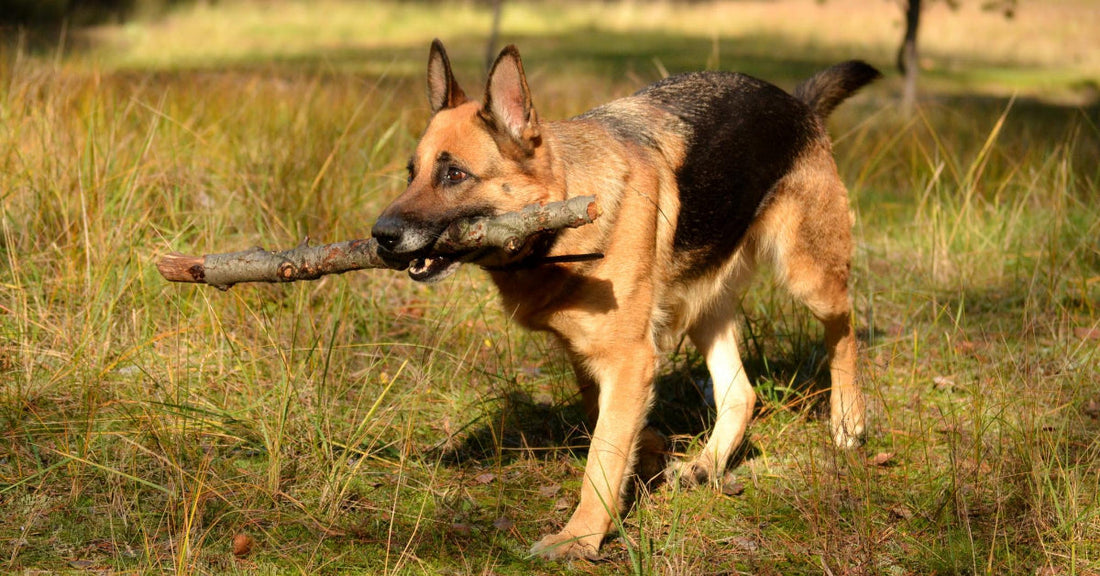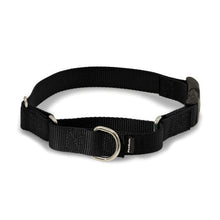How To Build Drive In Training

Do you have a dog who will spit out treats in training? How about a dog that won't play tug or chase a ball? If a dog won't accept a reward, that makes training pretty difficult. So how do we build drive for food and toys? Buckle your seat belts!
Building Drive for Toys: Do you think you're a boring person? Well, your dog might. If you just stand there with a tug and invite your dog to play, they may not find playing with you to be fun. Talk in a high-pitched voice, run laterally, and be excited. You'll look crazy to everyone within eyesight, but who cares? The important part is building drive in your dog and forming a bond.

A lot of shy dogs are hard to entice to play tug with you if you're holding the toy in your hand. They'll run after a toy and play with it, but they will either lightly bite it when it's in your hands as you try to play tug, or won't touch it at all. If you have a dog like this, buy a thin rope, and tie it to the toy. With the rope, you can move the toy to incite their prey drive, but it's far enough disconnected from you that they won't shy away. Every week, cut 6 inches off the end of the rope. They'll get closer and closer to you to play without noticing. Within time, you can probably convince them to play with it in your hand. If not, a toy on a 1ft rope is better than a dog who won't touch it at all. At least you now have the means to reward your dog for obeying or good behavior.
Patience exercises are another way to build drive for the toy. Mark the behavior you want but pause with the toy. Build tension. Make eye contact. Put your dog in that predatory stalking mode. Not too long that they lose focus and start looking around, but long enough that they get impatient.

Remember, drive for toys is part prey drive and part frustration. Prey drive is genetic, you can't make or train your dog to have more but, you can optimize it by being fun to play with and by building frustration.
Building Drive for Food: If you have a dog with low food motivation, there are a couple of tips and tricks you can use.
You can use movement, just like you would with a toy. For some reason, treats are twice as delicious if you run backward from your dog, and they have to chase you. Don't believe me? Ask your dog!

Another thing you should do is evaluate your treats. Milk bones? They're bone-shaped dog food. Nothing special. Don't be surprised that a dog who won't work for kibble won't work for hard treats. Cheaper store-bought soft treats are a step up. Expensive boutique dog treats are even better. But pieces of cooked steak, string cheese, and smoked salmon are on a level all their own. A dog who will spit out a treat when given better options will embarrass you in public by eating little pea-sized pieces of steak or string cheese as if you've never fed him before.
Charge the Mark: If you're just starting, or realize it may be better to start over, don't forget to charge the mark. Whether you use a clicker or a marker word, mark behavior you like and feed a high-value treat. When you're not asking your dog to do something and reward natural behavior with high-value treats, you're building a drive for food.

There's no confrontation, no thinking necessary, no stress, just delicious treats. This helps shy dogs out a lot because they feel unsure when they don't know what to do. Eliminate that conflict by teaching them that training isn't stressful, it's fun and freeing. Dogs like this behave differently after they're fully trained because the confidence of knowing what's expected of them and how to do things replaces the unsureness that they had before being trained. Competence = Confidence.
Patience exercises exist with food too, treat it like we discussed before toys. Build tension for the reward and don't tease the dog but build the drive. You'll know you have the right balance when your dog's eyes are locked with your eyes or the treat and they start licking their lips. Don't even give a command, just have a free reward session with high-value treats. Make them wait, build frustration, reward, or even toss the food to entice their prey drive.

The goal is to build frustration and optimize the genetic levels of drive your dog has. So make everything low stress, high reward. Be happy, be vocal, and be active in the movement. Make your dog think there's a party every time he does the right thing. Over time you can space the rewards out and take it down a notch. Especially if your exaggerated praise is making the dog too excited to focus. You will have to find a balance eventually, but in the beginning, the only goal is to be the best thing a dog could ever imagine out of a person. Entertaining, low stress, good food, fun toys, and an active trainer who plays silly games, gives food freely and likes to play tricks on them, and makes them so frustrated that they can't wait until you mess up and they can get ahold of that toy you keep teasing them with, or can't wait until they finally get that piece of steak!
I hope you find these tips helpful. Even if you have a dog with a lot of drive, try these games and methods out for a week and comment with your results! Thank you for reading. Leave a like, and share with friends and family. We appreciate it, and you! Thank you.
You might also like: How To Help A Shy Dog
























